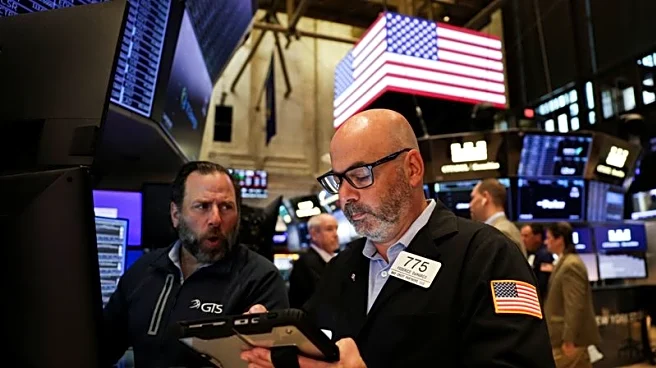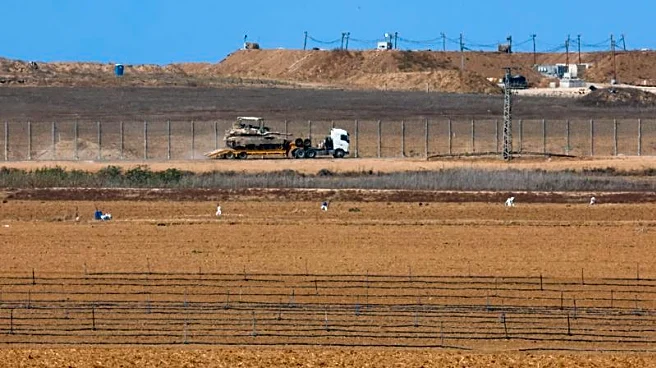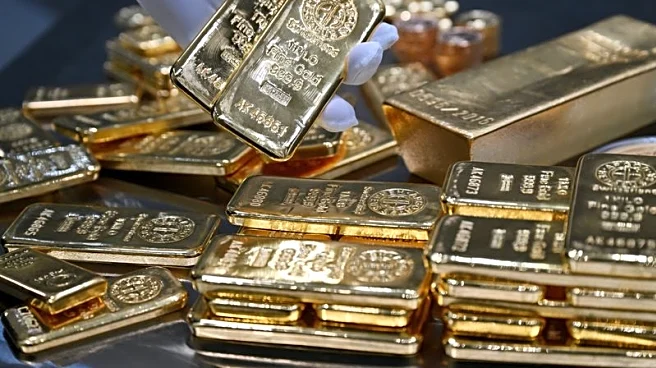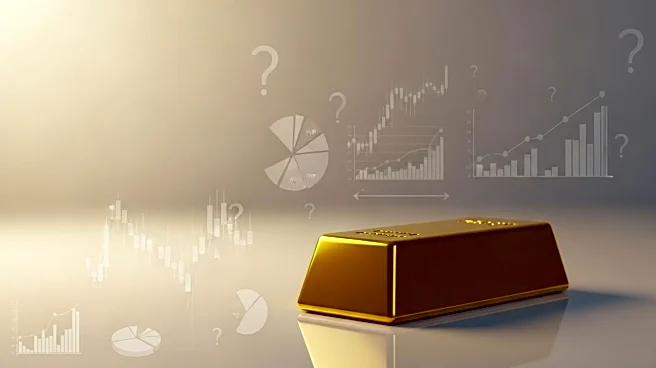What's Happening?
Gold prices have surged more than 50% this year, reflecting investor sentiment towards safe-haven assets amid economic and political uncertainties. The spike in gold prices has been particularly pronounced since mid-August, coinciding with a slowdown in the labor market and a government shutdown that has increased economic risk. Analysts suggest that the rise in gold prices could be a warning sign for the U.S. economy, indicating potential downturns. The depreciation of the U.S. dollar, which has fallen about 11% against other currencies in the first half of 2025, has further fueled the shift towards gold. This decline in the dollar's value reflects a move away from global dependence on the dollar as a reserve currency, influenced by changes in U.S. economic policy and President Trump's pressure on the Federal Reserve.
Why It's Important?
The surge in gold prices is significant as it highlights investor concerns about the stability of traditional U.S. assets like treasury securities. The shift towards gold suggests a lack of confidence in the U.S. economy's resilience amid political and economic uncertainties, including the ongoing Russia-Ukraine conflict and domestic partisan divisions. The potential for the Federal Reserve to cut interest rates further could enhance gold's appeal, as lower rates diminish the attractiveness of interest-bearing investments. This trend underscores broader economic challenges, including inflation and labor market issues, which could have long-term implications for U.S. economic policy and global financial markets.
What's Next?
The Federal Reserve is expected to cut interest rates later this month, marking two consecutive rate reductions aimed at counteracting the labor market slowdown. This move could further benefit gold prices, as lower interest rates make gold more attractive compared to interest-bearing assets. Investors and policymakers will closely monitor these developments, as continued economic and political uncertainty may drive further shifts in investment strategies. The potential for a 'civil war of sorts' in the U.S., as suggested by Ray Dalio, could also influence market dynamics and investor behavior.
Beyond the Headlines
The rise in gold prices may have deeper implications for the global financial system, particularly regarding the role of the U.S. dollar as a reserve currency. As investors seek alternatives to traditional safe assets, there could be a long-term shift in global economic power dynamics. Additionally, the volatility associated with high gold prices poses risks for investors entering the market at peak levels, potentially leading to losses rather than security. This situation highlights the complex interplay between economic policy, market sentiment, and geopolitical factors.











